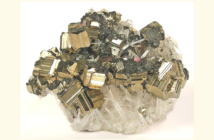In a previous post, we wondered whether recycling batteries too fast caused the Samsung calamity. The Fast Company recalls the prelaunch brief where the subtext said, “Our phone has a bigger battery and charges up faster than the Apple iPhone 7.” It goes on to mention several theories that emerged since then. We found these insights into Samsung’s lithium-ion technology worth passing on.
Contributing Factors in Samsung’s Lithium-Ion Technology
Theory One: Poor Battery Design: There were two manufacturers working to the Samsung specification. At first, only batteries made by its own subsidiary failed. When TDK’s Amperex Technology’s batteries also malfunctioned Samsung pulled the plug. This was one of the most expensive product recalls ever. It had to be, or it would have been socially irresponsible.

Theory Two: Poor Phone Design: Both Samsung and its Galaxy Note 7 battery suppliers have excellent technical reputations. It seems unlikely between them that they would have missed something so obvious as the plates being too close together. The phone theory holds that pressure to produce slimmer phones with more components and fashionably curved corners necessitated them being close together.
Theory Three: Fast Charging: Consumer pressure caused Samsung to announce new fast-charge technology that “lets the battery in the Note 7 charge to 50% capacity in 30 minutes”. This requires using a USB charger with fast-charging capacity, and a moderator inside the battery that keeps the input within manageable limit. This brings us closer to the achilles heel of Samsung’s lithium-ion technology.

The root cause was probably a combination of several factors that came together unfortunately. If electrons exchange too rapidly between positive lithium-ion and negative carbon electrodes, the latter can lose stability and produce sufficient carbon dioxide to burst the battery open and explode in a “vent of flame”.
While what started the chain is open to debate, one thing appears clear. The pressure-safety interrupt switch failed to kick in. It may have just have been Samsung’s bad luck to broach the limits of lithium-ion technology.
Related




